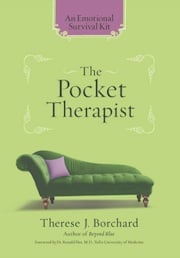
Psychologist and mental health blogger Elisha Goldstein quotes a favorite author of mine, Don Miguel Ruiz, in his post “4 Steps to Getting Free from Limiting Beliefs”: “You see everything is about belief, whatever we believe rules our existence, rules our life.”
I’ve been using Ruiz’s book, “The Four Agreements,” to help me process the beliefs of others, especially toward me (i.e. “people who struggle from depression are lazy”). But Elisha is right when he explains that the beliefs we hold about ourselves are just as disabling and disempowering as the ones other folks hold about us. He writes:
Of course, whatever we believe colors the lenses of how we see the world and our very next interaction. If we believe we can’t give that speech, lose that weight or live without our Blackberries or IPhones every minute it’s going to be a heck of a lot harder if not impossible to do so. The same goes for getting through anxiety, depression, or addiction.
We start to integrate fundamental beliefs in this world from the time we’re in the womb. We’re already beginning to sense the environment around us, taking in and processing information.
As life progresses we start to integrate this information as truths. Everything is fresh and new, so what we see must be how the world is. If our parents were erratic or abusive, we interpreted the world as unsafe or insecure and that stayed with us as a feeling of fear to this day. Maybe there is the belief that it’s impossible to love or be loved. Or perhaps they didn’t pay attention to us and so we sprout the belief that we are unworthy.
However, at the end of the day it’s all just a story, not a truth, not a fact.
We have the ability to change our stories and beliefs, of course. But the process is difficult and doesn’t produce magic overnight (unless you’re smoking weed as you try). Here are four steps that Dr. Goldstein suggests to form new neural connections that will assist toward mental health and develop breaks before we hit panic:
- Exposing the belief – The first thing we need is a sense of radical acceptance of the actual beliefs and feelings that are there. If there is a belief that you are unworthy or incapable in some way, you need to call it out, write it down, and expose it.
- Feeling into the emotional reaction – There will be some feeling that is tied to this belief. We also need to acknowledge the reality of this feeling and give it space. It also needs this same type of exposure.
- Relating to emotion with compassion – It’s not enough just to expose the emotion; we need to do something that is restorative and healing. This would be to get in touch with a part of yourself that exudes kindness, compassion and/or love. As you feel into the emotion see if you can hold it with this kind awareness. If that is difficult, imagine someone you know, living or dead, who symbolizes this kind of attention and allow that feeling to flow through you. If any judgments arise around this step (e.g., this is so Pollyanna or I can’t do this), notice those as thoughts, mental events in the mind that seemingly come and go, and come back to this practice.
- Rewriting the story – Saying to yourself, “In the past I have had difficulty with XYZ due to my old story, this story is not a fact, and moving forward I’m going to open up to new possibilities.”
If you get frustrated take a break. Cool the thoughts for awhile and take up the practice when you’re feeling better. Eventually you will arrive at your new belief system which, theoretically, will be much more kind to you than the old one.
To read Elisha Goldstein’s original blog post, click here.
* Click here to subscribe to Beyond Blue and click here to follow Therese on Twitter and click here to join Group Beyond Blue, a depression support group. Now stop clicking.

